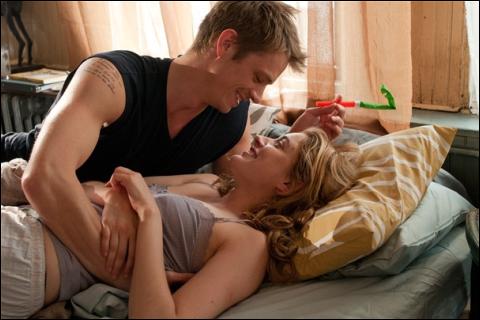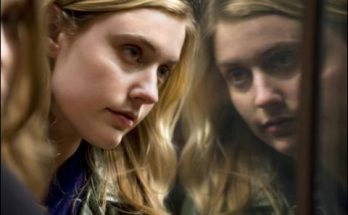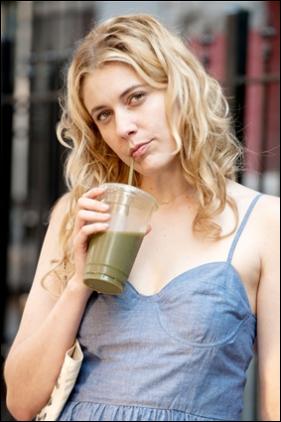Lola Versus follows a woman through a year full of humor and heartbreak as she reevaluates a lifetime’s worth of aspirations and plans. To create a poignant and funny portrait of creative young New Yorkers trying to make their mark in Manhattan, Daryl Wein and Zoe Lister- Jones looked to their own lives and those of their peers for inspiration.
The real-life couple, who met while studying acting at NYU Tisch School of the Arts, had taken a year-long sabbatical from their long-term relationship and experienced new “freedom” quite differently. “I refer to it as my year of traumatizing sexual escapades and I would never want to go through it again,” Lister-Jones says. “It seemed to me that Daryl and his male friends had so many more choices. They just pointed and women came, but then the woman falls in love and the guys are like, ‘maybe next time.’ For women, it’s just a different atmosphere.”
The filmmakers were drawn to the idea of a contemporary romantic comedy with a spirited and authentic woman at its heart. “We wanted to make a fresh, intelligent movie that would resonate,” says Wein. “There are so few female-driven movies nowadays that are told in a true and honest way. The more we talked about it, the more we thought the female perspective on being suddenly single in the city was an intriguing idea for a film.”
They decided to take the classic boy-meets-girl scenario and turn it on its ear. “In a classic romantic comedy, the boy and the girl have some difficulties, but they eventually fall in love,” Wein continues. “We thought it would be more interesting to see what happens when a long-term relationship breaks up and the girl suddenly has to change everything in her life.”
As the film begins, Lola’s fiancé Luke breaks off their engagement just weeks before the wedding. Over the next 12 months, she slowly, sometimes awkwardly and often comically, adjusts to her new life as a single woman in the city.
What she experiences is a very different reality than what is commonly portrayed in movies about single women in New York, says Lister-Jones. “I know so many incredible women who have amazing qualities-physical, emotional and intellectual-but who are alone. We hadn’t seen that dealt with in a raw and genuine way for many years.” Wein adds, “It isn’t as common to see a leading lady making this many mistakes, and being unapologetic in making those mistakes. We’re so used to female leads being sparkly clean, endlessly charming with winning personalities, always getting the guy in the end. We were interested in a different kind of lead, a woman who was more enigmatic and sometimes alienating. When you are going through a break-up, you are a mess. You aren’t always self-aware. That was the quality we wanted to capture.”
The writers agreed placing Lola on the cusp of her 30th birthday would raise the stakes for her. “Daryl and I are both in our late 20s, and we write what we know,” says Lister-Jones. “Turning 30 is a big benchmark for both women and men. For women, many feel that their biological clock is starting to tick. There’s this perception that they will be alone and their options are becoming much more limited.”
Such a pivotal moment can be the start of an existential crisis for many people, Wein adds. “It’s a time when people are starting to settle down and have steady careers. To suddenly end a long relationship and start from scratch is a huge life change. That is exactly where we enter this story, and we get to see how Lola works through her crisis.”
As they began to flesh out Lola’s story, a best girlfriend, Alice (played in the film by Lister-Jones) appeared, inspired by the writers’ many single female friends. A sympathetic male perspective also crept into the script as the characters of Lola’s ex, Luke, and their mutual best friend, Henry, took shape. “With a female and male writing team, the story is never told exclusively from the point of view of one gender, and that was important to us,” says Lister- Jones.
“When Luke and Henry come in, everything gets intertwined,” adds Wein. “We love to get messy and have people crossing boundaries.”
Next Page: Strong Visual Styles
Views: 69


